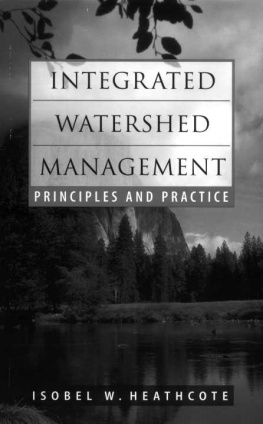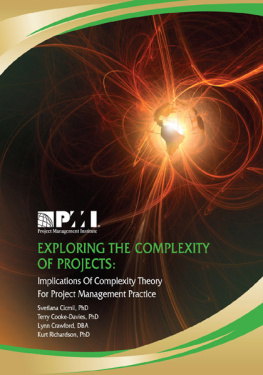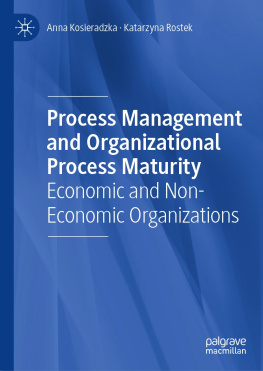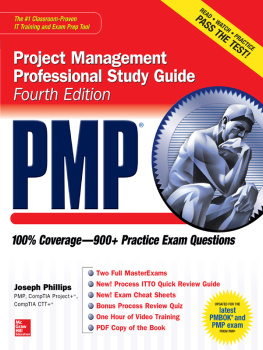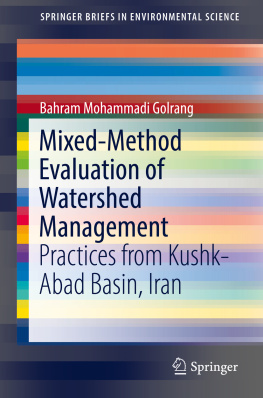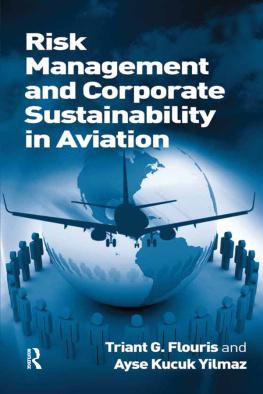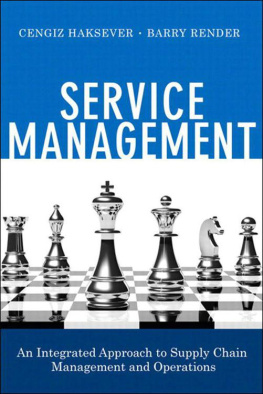Isobel W. Heathcote






Contents
ix
Chapter 1
Chapter 2 15
Chapter 3 61
Chapter 4 99
Chapter 5 135
Chapter 6 156
Chapter 7 195
Chapter 8 244
Chapter 9 287
Chapter 10 328
Chapter 11 362
Chapter 12 375
Preface
Conservation is a state of harmony between men and land.
Aldo Leopold, A Sand County Almanac
To waste, to destroy, our natural resources, to skin and exhaust the land instead of using it so as to increase its usefulness, will result in undermining in the days of our children the very prosperity which we ought by right to hand down to them amplified and developed.
Theodore Roosevelt, Message to Congress, December 3, 1907
Water is possibly our most precious natural resource. The abundance and quality of water drives all human systems and those of most other organisms as well. Yet until the 1970s, most water management practices sought to solve single, localized problems without taking account of the impacts of those actions on the biophysical, economic, and social elements of the larger watershed system. Over the past twenty years, a strong global consensus has begun to develop around the notion that the watershed is, in fact, the best unit for the management of water resources. Now, countries in every part of the world try to place water management actions in the context of natural and human systems: watersheds, and the human communities in them.
This book builds on the experience of many individuals and agencies around the world as they have grappled with the challenge of integrated watershed management. Almost without exception, meeting that challenge has required collaboration among specialists in widely varying disciplines-engineering, biological sciences, economics, sociology, law, and ethics-and among government agencies, private industries, nongovernment organizations, and the pub lic. This level of collaboration marks a dramatic change from the technocratic approaches to water management that were typical of earlier generations. It also marks the beginning of a new, and integrated, style of water management, embracing the contribution of a variety of disciplines and viewpoints in the development of strong water management strategies.
This book aims to present an integrated approach to watershed management to those who are now, or in future will be, responsible for the management of precious water resources. It is intended for use by senior undergraduate and graduate students and by water management professionals. It has several key objectives:
1. To present a rational framework for the development of water resources management strategies.
2. To provide an introduction to the technical elements and tools of water management.
3. To illustrate the interplay of disciplines in the management of water resources problems.
4. To demonstrate that water resources planning is not a clear-cut scientific or engineering technique with a single "right" answer, but rather a continuous social process intended to move a community closer to its goals for environmental quality.
Many agencies and individuals have contributed to the development of this book. In particular, I would like to recognize the advice, comments, and technical support provided by past and present staff of the Ontario Ministry of Environment and Energy's watershed management group; the Grand River Conservation Authority (Cambridge, Ontario); the Institute for Water Resources, U.S. Army Corps of Engineers; the U.S. Environmental Protection Agency water management and hydrologic simulation groups; and the Canadian Institute for Environmental Law and Policy (Toronto). I would also like to acknowledge the special support and advice I have received from many individuals, in particular Walter Lyon, Harold "Jack" Day, David Eaton, Mark Killgore, Tony Smith, Bill James, Trevor Dickinson, Ramesh Rudra, Hugh Whiteley, Doug Joy, Don Weatherbe, George Zukovs, and Mike Fortin. On a personal level, I would like to thank my husband, Alan Belk, and my children, Elspeth Evans, Zoe Belk, and Edward Belk, and my parents, Blake and Barbara Heathcote, for their continued support and encouragement through the long process of research and writing. Finally, warmest thanks go to the editorial and production staff at John Wiley and Sons, particularly Dan Sayre, Neil Levine, Ira Brodsky, and Millie Torres-Matias, who have cheerfully and enthusiastically seen this hook through its development and publication.
ISOBEL HEAFHCOTE
University of Guelph
November /997
1
Introduction
Water is one of our most precious resources. In moist, temperate regions, water is the fundamental mechanism in chemical flux and cycling. In and regions, access to water lies at the heart of much conflict. Every living organism on this planet requires water in some form. Water, therefore, regulates population growth, influences world health and living conditions, and determines biodiversity (Newson 1992).
For thousands of years people have tried to control the flow and quality of water. McDonald and Kay (1988) document water disputes of 4,500 years ago in the Mesopotamian cities of Lagash and Umma. Engineering works related to military and urban development, drainage works, irrigation projects, and water diversions can all be documented over thousands of years. Bonnin (1988) notes that the year 1989 was the 2,000th anniversary of a Roman decree (senatus- consultus) to the effect that:
Ne quis ayuam oletato clo/o 1nalo ubi publice saliet si quis oletarit sestertiorum X mi/a multa esto.
That is,
It is forbidden to pollute the public water supply: any deliberate offender shall be punished by a fine of 10,000 sesterces.
Water provided resources and a means of transportation for development in North America-and placed limits on that development in some areas. Even today the presence or absence of water is critical in determining the uses to which land can be put.
Yet despite this long experience in water use and water management, humans have failed to manage water well. Through the nineteenth century and much of the twentieth century, economic development in many countries was rapid, and often at the expense of sound water management. Frequently, optimism about the applications of technology-whether dam-building, wastewater treatment, or irrigation measures-vastly exceeded concerns or even interest in their environmental shortcomings. Pollution was viewed as the inevitable consequence of development, the price that must be paid if economic progress was to be achieved.
Rachel Carson's publication of Silent Spring in 1962 was a turning point in public views about the environment in general and about water in particular. The hook drew attention to the rapid deterioration of water quality and the role of industrial polluters in that decline. Over the next decade governments around the world strove first to understand, and then to limit, misuse of water, establishing stronger environmental-protection legislation, more efficient administrative structures, and better oversight of public and private water users.

